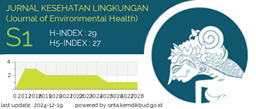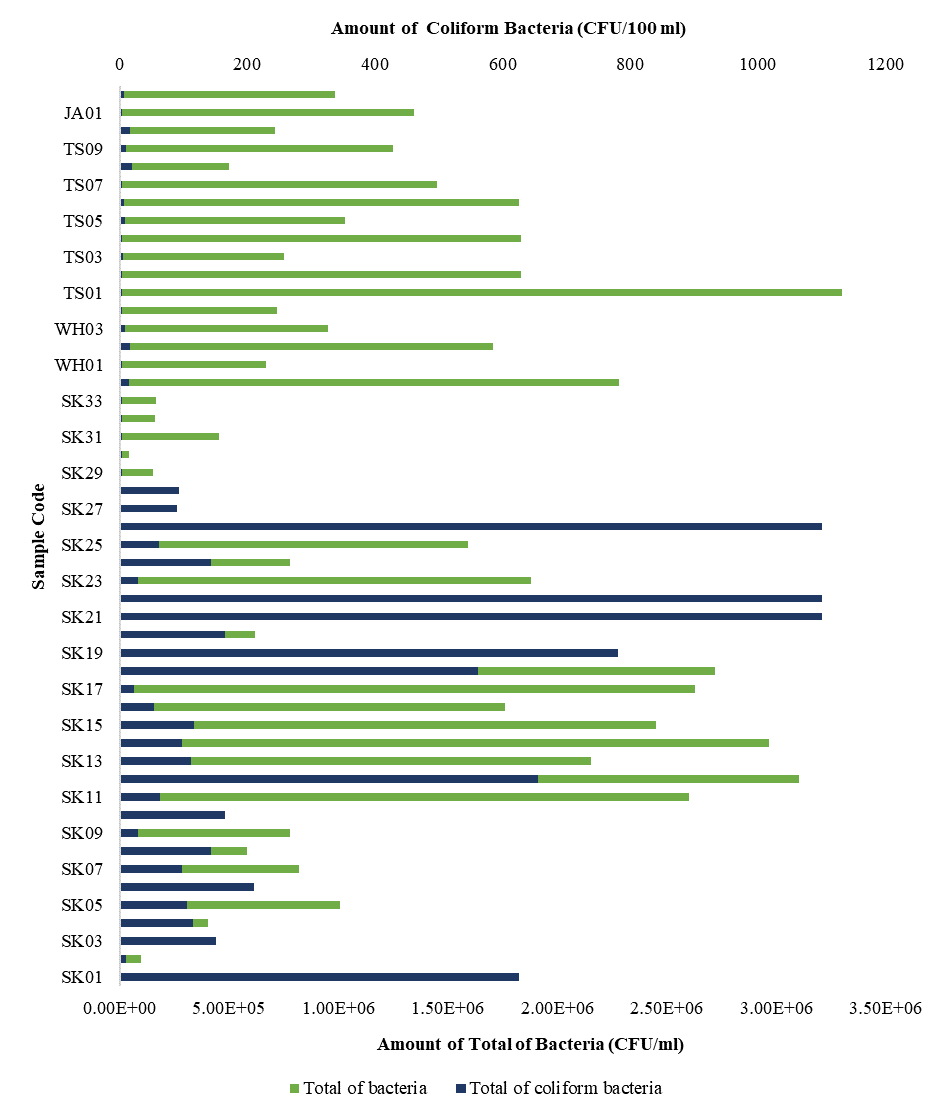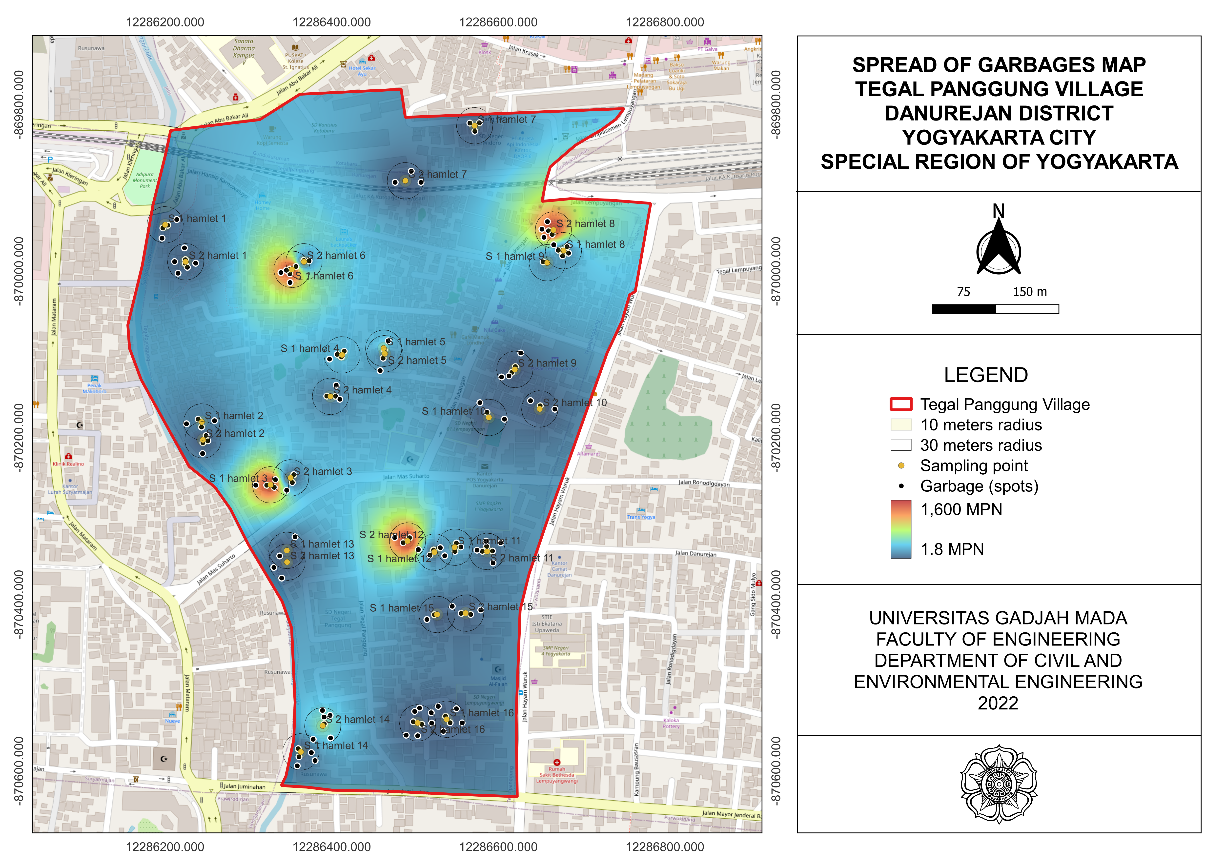Analysis The Level Of PM2,5 And Lung Function Of Organic Fertilizer Industry Workers In Nganjuk
Downloads
ACGIH (American Conference for Govermental Industrial Hygienists). (2006). Threshold Limit Values for Chemical Substances. Clear Lake: Univiversity of Houston. Diakses dari http://www.acgih.org/ [pada 26 Juli 2017].
Aulia, Z. (2014). Analisis Kadar PM2,5 dan Fungsi Paru Pekerja di Industri Cecek Desa Katerungan Kecamatan Krian Kabupaten Sidoarjo. Skripsi. Surabaya: Universitas Airlangga.
Depkes RI. (2008). Pedoman Pengendalian Penyakit Paru Obstruktif Kronik (PPOK). Dirjen PP & PL.
GOLD (Global Initiative for Chronic Obstructive Lung Disease). (2017). Global Strategy for Diagnosis, Management, and Prevention of Chronic Obstructive Pulmonary Disease. Diakses dari: http://www.sppneumologia.pt/ [pada tanggal 07 Juni 2017].
Hastiti, L. R. (2013). Pajanan PM2,5 dan Gangguan Fungsi Paru Serta KadarProfil Lipid Darah (HDL, LDL, Kolesterol Total, Trigliserida) pada Karyawan PT X, Kalimantan Selatan Tahun 2012. Jurnal Kesehatan Lingkungan. Depok: FKM UI.
Hestya, I. (2014). Analisis Risiko Kesehatan Lingkungan (ARKL) Kadar Partikulat dan Keluhan Gangguan Pernapasan pada Masyarakat Sekitar PG Rejo Agung Baru Madiun. Skripsi. Surabaya: FKM Unair.
Hidayat, S; Yunus, F; dan Susanto, A.D. (2012). Pengaruh Polusi Udara dalam Ruangan terhadap Paru. Jurnal Continuing Medical Education Vol 13 No. 1. Jakarta: RS Persahabatan .
IDEM (Indiana Department of Enviromental Management). (2014) . Particulate Matter (PM2,5/PM10) Office of Air Quality. India: A State That Works. Diakses dari: http://www.in.gov/idem/[pada 10 November 2016].
Kartono B; Purwana R; dan Djaja IM. (2008). Hubungan Lingkungan Rumah dengan Kejadian Luar Biasa (KLB) Difteri di Kabupaten Tasikmalaya (2005 – 2006) dan Garut Januari 2007, Jawa Barat. Makara Kesehatan Vol 12, No. 1, Juni 2008: 5 – 12.
Katherine, Rizky. (2014). Hubungan Paparan Debu dengan Kapasitas Fungsi Paru Pekerja Penggilingan Padi di Kabupaten Sidrap. Jurnal. Makasar: FKM UNHAS.
Keputusan Menteri Kesehatan RI Nomor 1405 Tahun 2002 tentang Persyaratan Kesehatan Lingkungan Kerja Perkantoran dan Industri
Lagorio, Susanna, et. Al. (2006). Air Pollution and Lung Function among Susceptible Adult Subject: A Panel Study. BioMed Central Journal of London. Enviromental Health: A Global Access Science Source. Diakses dari: http://www.biomedsearch.com/ [pada tanggal 1 Juli 2017].
Marpaung, Y. M. (2012). Pengaruh Pajanan Debu Respirable PM2,5Terhadap Kejadian Gangguan Fungsi Paru Pedagang Tetap di Terminal Terpadu Kota Depok Tahun 2012. Skripsi. Depok: FKM UI.
Mengkidi, D. (2006). Gangguan Fungsi Paru dan Faktor-Faktor yang Memengaruhinya pada Karyawan PT. Semen Tonasa Pangkep Sulawesi Selatan. Skripsi. Semarang: Universitas Diponegoro
Moturi N. W. (2010). Risk Factor for Indoor Air Pollution in Rural Household in Mauche Division, Molo District, Kenya. African Health Sciences Vol 10 No. 3. Diakses dari: https://www.ncbi.nlm.nih.gov/ [pada tanggal 1 Juli 2017].
Mukono. (2011). Prinsip Dasar Kesehatan Lingkungan. Edisi Kedua. Surabaya: Pusat Penerbitan dan Percetakan Unair (AUP).
OSH (Occupational Safety and Health)., (1999). A Guide Respiratory Protection. Departmen of Labour [e-book]. Tersedia di http://www.worksafe.govt.nz/ [diakses pada 08 Juli 2017].
Peraturan Menteri Tenaga Kerja dan Transmigrasi RI Nomor 08 Tahun 2010 tentang Alat Pelindung Diri.
Peraturan Menteri Pertanian Nomor 70 Tahun 2011 RI tentang Pupuk Organik, Pupuk Hayati dan Pembenah Tanah.
Peraturan Menteri Ketenagakerjaan dan Transmigrasi RI Nomor 13 Tahun 2011 tentang Nilai Ambang Faktor Fisika dan Kimia di Tempat Kerja.
Peraturan Menteri Kesehatan RI Nomor 70 Tahun 2016 tentang Standar dan Persyaratan Kesehatan Lingkungan Kerja Industri.
Pihlava, T.; Uuppo, M., dan Niemi, S., (2012). Health Effect of Exhaust Particles. Finland: University of Vaasa. Diakses dari: http://www.uva.fi/en/ [pada tanggal 08 Februari 2017].
Putri, E.P.D. (2012). Konsentrasi PM 2,5 di Udara dalam Ruang dan Penurunan Fungsi Paru pada Orang Dewasa di Sekitar Kawasan Industri Pulo Gadung Jakarta Timur Tahun 2012. Skripsi. Jakarta: Universitas Indonesia.
SNI 19-7119.6-2005 tentang Penentuan Lokasi Pengambilan Contoh Uji Pemantauan Kualitas Udara Ambien .
Sumakmur. (2009). Higiene Perusahaan dan Kesehatan Kerja. Jakarta: CV Haji Masagung
Upadhyay, S; Kaustav Ganguly; and Tobias Stoeger. (2014). Inhaled Ambient Particulate Matter And Lung Health Burden. European Medical Journal. Diakses dari: http://emjreviews.com/ [pada 21 Juni 2017].
US EPA. (2016). Health and Enviromental Effect of Particulate Matter. Diakses dari: https://www.epa.gov/ [pada 3 November 2016]
Uyainah, A. Z; Amin, Z. dan Thufeilsyah, F. (2014). Spirometri. Depok: Departemen Ilmu Penyakit Dalam FKUI/RSCM. Diakses dari: http://www.respirologi.com/ [pada 13 November 2016].
Wang, J. dan Ogawa, S. (2015). Effects of Meteorolgical Conditions on PM2,5 Concentrations in Nagasaki, Japan. International Journal of Research and Public Health. Tersedia di: https://www.ncbi.nlm.nih.gov/ [diakses pada 14 Juli 2017].
Yulaekah, S. (2007). Paparan Debu Terhirup dan Gangguan Fungsi Paru padaPekerja Industri Batu Kapur. Skripsi. Semarang: Universitas Diponegoro.
2. Formal legal provisions to access digital articles of electronic journal are subject to the provision of the Creative Commons Attribution-ShareAlike license (CC BY-NC-SA), which means that Jurnal Kesehatan Lingkungan is rightful to keep, transfer media/format, manage in the form of databases, maintain, and publish articles.
3. Published manuscripts both printed and electronic are open access for educational, research, and library purposes. Additionally, the editorial board is not responsible for any violations of copyright law.
JKESLING by UNAIR is licensed under a Creative Commons Attribution-ShareAlike 4.0 International License.







































